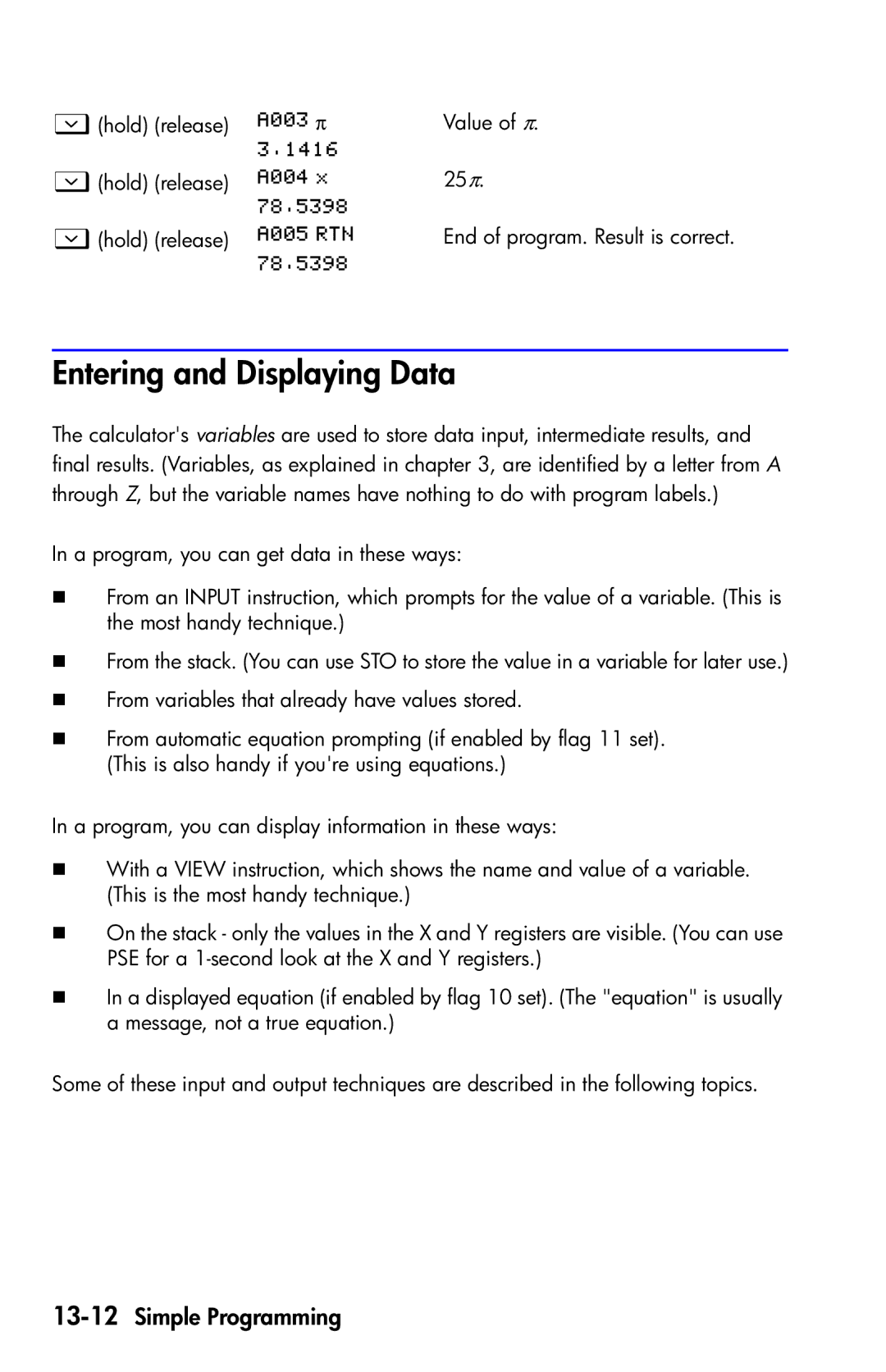Ø(hold) (release) | π | Value of π. |
| |
|
Ø(hold) (release) | | 25π. |
| |
|
Ø(hold) (release) | | End of program. Result is correct. |
| |
|
Entering and Displaying Data
The calculator's variables are used to store data input, intermediate results, and final results. (Variables, as explained in chapter 3, are identified by a letter from A through Z, but the variable names have nothing to do with program labels.)
In a program, you can get data in these ways:
From an INPUT instruction, which prompts for the value of a variable. (This is the most handy technique.)
From the stack. (You can use STO to store the value in a variable for later use.)
From variables that already have values stored.
From automatic equation prompting (if enabled by flag 11 set). (This is also handy if you're using equations.)
In a program, you can display information in these ways:
With a VIEW instruction, which shows the name and value of a variable. (This is the most handy technique.)
On the stack - only the values in the X and Y registers are visible. (You can use PSE for a
In a displayed equation (if enabled by flag 10 set). (The "equation" is usually a message, not a true equation.)
Some of these input and output techniques are described in the following topics.
